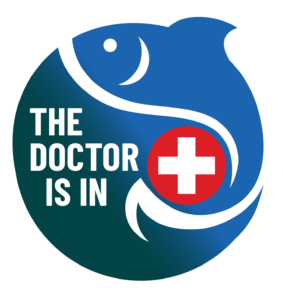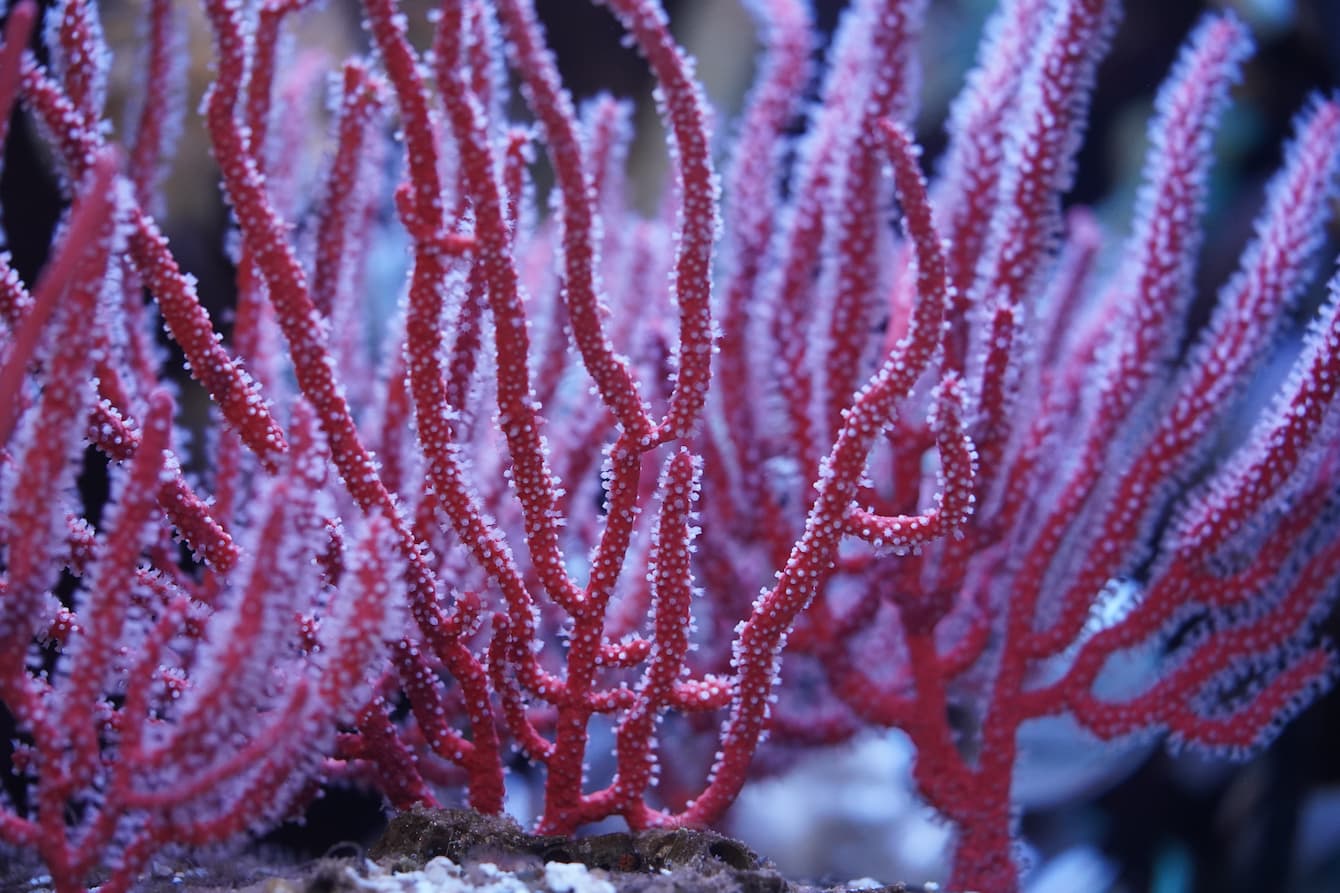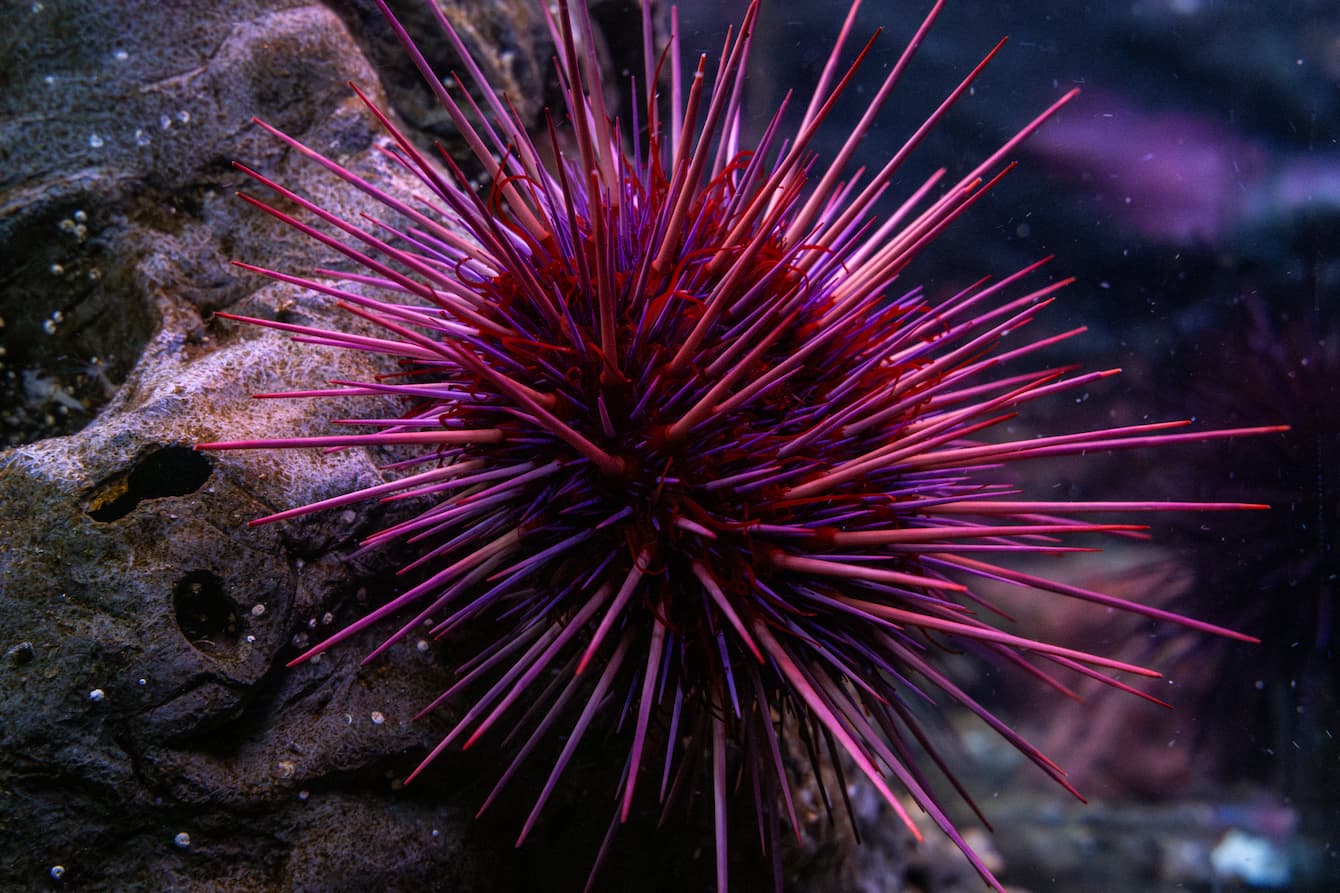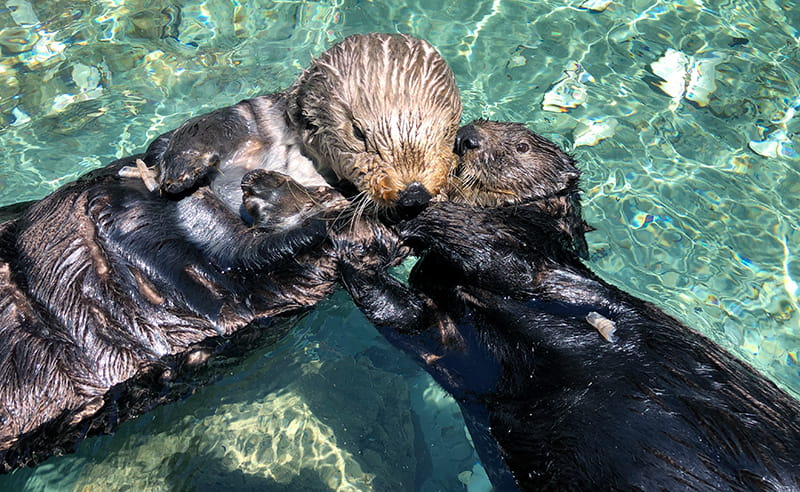
This story is part of our series, The Doctor Is In—highlighting our veterinary team’s expertise in service of animal wellbeing.
Invertebrates—animals without backbones—are found in every habitat at the Seattle Aquarium. And, like all animals entrusted to us, they need expert care to thrive. “Our goal is to provide great quality of life in an enriching environment for the animal’s whole life,” says Director of Animal Health Dr. Caitlin Hadfield, MA VetMB MRCVS DiplAZCM DipECZM, “And that goes for all the animals under our care.”
“All the invertebrates get checked by Aquarium staff at least once every day,” she comments, “Their environmental conditions are checked as well—that includes evaluating the water and the systems that support it.” Although some invertebrates may seem like fairly simple animals on the surface, managing their care, says Dr. Hadfield, presents some interesting challenges. One of them stems from tracking the number of animals of each species because some, like corals, can be colonial. “It gets tricky,” says Dr. Hadfield. “Do we track this as one animal—a coral head certainly looks like one structure—or as the thousands of polyps that make up that structure?”

Even invertebrates need primary care providers
Regardless of how they’re counted, invertebrates, like all the animals at the Aquarium, are part of our preventative medicine program. Aquarium biologists are on the front lines of animal care, making careful observations of each animal at least once a day. “Our staff are experts at evaluating the animals they’re caring for and are able to identify subtle changes in their appearance or behavior,” says Dr. Hadfield. Because all animal care staff have the training and experience to make these evaluations, each animal at the Aquarium has the equivalent of a PCP, or primary care provider, who has the best understanding of their health history and needs.
Routine exams, in many cases, are also part of the Aquarium’s preventative medicine program (yes, even for invertebrates!). “A big part of that is reviewing the animal’s history,” says Dr. Hadfield. “For that, we rely on the knowledge of our animal care specialists and the information in our record systems.” Along with that review, an invertebrate checkup might involve a physical exam, fluid collection or ultrasound, depending on the animal’s needs. Sea urchins need their teeth checked, too!*
*Surprise—sea urchins have teeth! They’re arranged in circle at the bottom of the urchin’s body.

All for one, one for all
When doing health checks, it’s important to consider all the animals in a habitat. “If an animal isn’t eating well,” notes Dr. Hadfield, “It could be normal for that time of year or life stage, but it could also be because there’s something wrong with that animal, the other animals around it, or the world it’s living in.” In those cases, animals that show symptoms first can become “canaries in the coalmine” for issues that might affect neighboring animals. Closely monitoring individual animals can keep smaller problems from spreading and becoming bigger.
Providing the very best care and quality of life for all the animals entrusted to us is a vital part of our mission, Inspiring Conservation of Our Marine Environment. Learn more about invertebrates at the Aquarium on our website or, better yet, plan a visit with us soon!


